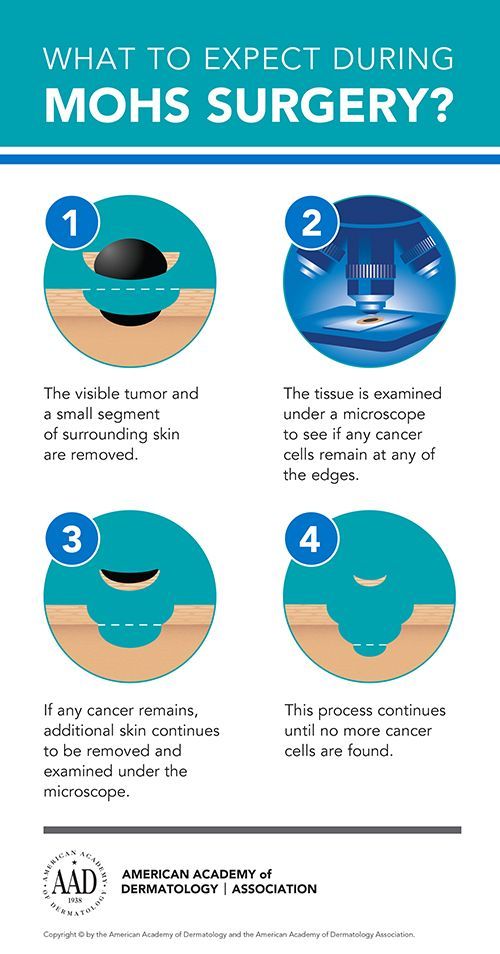Mohs Micrographic Surgery
When dealing with skin cancer, early detection and treatment is key to survival.
Mohs Micrographic Surgery, which Dr. O'Donoghue can safely and effectively perform in the comfort of our state-of-the-art office, usually in just one visit, is the most effective treatment for many basal cell carcinomas (BCCs) and squamous cell carcinomas (SCCs), the two most common types of skin cancer. Mohs can also be used to treat some rare forms of skin cancer and a variation of the procedure is sometimes used to treat a type of melanoma called lentigo malignant melanoma.
Through microscopic examination of the surgical margins, this exacting procedure allows the doctor to completely excise the cancerous cells, while sparing as much healthy tissue as possible. This results in the highest cure rate while minimizing the size of the scar and recovery time.
Mohs (pronounced moes), has the unique benefit of allowing the doctor to see where the cancer ends, in real time, so you can keep as much healthy tissue as possible. This is especially important when the cancer occurs in areas where there is little skin to spare like eyelids, ears or nose.
Dr. O’Donoghue has over 10 years of experience performing this type of surgery and, as a board member and fellow of the Florida Society of Dermatologic Surgeons (FSDS), a member of the American Society for Dermatologic Surgery (ASDS), and a member of the American Society for Mohs Surgery (ASMS), he is at the forefront of the latest advances in the treatment of skin cancer.
What to expect from Mohs Surgery
On the day of the surgery, the doctor will examine the area to be treated, then you will be prepped for surgery and given a local anesthetic. This means you will be awake during the procedure.
Once the anesthetic takes effect, the doctor will excise the visible cancer along with a thin layer of the surrounding skin, then you’ll be bandaged so you can wait comfortably in our Mohs Relaxation Suite.
While you wait, the doctor will examine the layer of skin surrounding the tumor under a microscope. If cancer cells are found, he’ll remove another layer. This process will continue until no cancer cells are visible under the microscope.
Once the microscopic evaluation reveals no cancer cells, the doctor will decide how to treat your wound. Some patients may not even require stitches while others may require a skin graft or some other type of surgery. Depending on the extent of the required treatment, the doctor may treat your wound on the same day or he may refer you to another surgeon for wound treatment.
Click on the image to view and download a larger PDF version.


